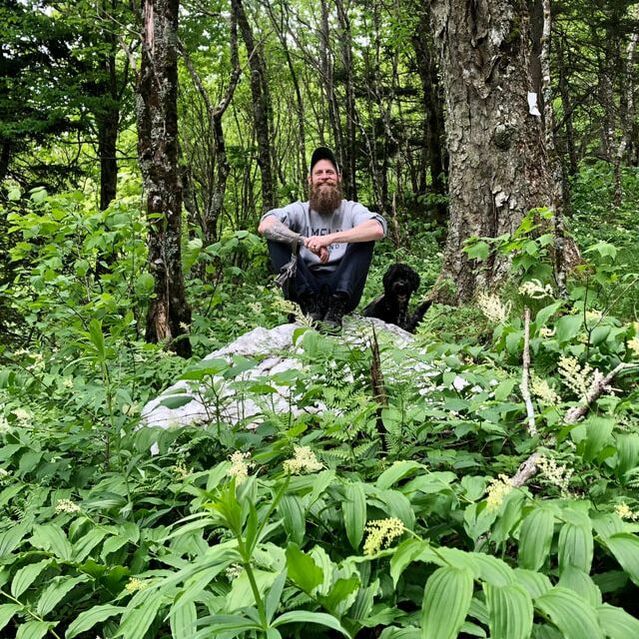Twitter: @Prof_Van_Stan
To me, ecohydrology means: placing water into Douglas Adams’ “Total Perspective Vortex” (TPV) and sharing the experience. No doubt this requires some explanation ;) The TPV is a fictional invention described by Adams in his “Hitchhiker’s Guide to the Galaxy.” The machine could extrapolate “the whole of reality” from whatever was placed before its lens. Although the scientist in Adams’ book, Trin Tragula, used a crumb of cupcake for his extrapolation, an ecohydrologist would do well to place water before its lens, then stare and share the resulting insights. After all, what doesn’t water contain or sustain in ecosystems?
What are your undergraduate and graduate degrees in?
I began with a bachelors in Environmental Science and English. Then, I pursued a masters in Environmental Science and Policy and another in Geography. Finally, I earned a philosophical doctorate in Environmental Geography, focusing on how plant canopies intercept, re-distribute, and compositionally alter precipitation.
How did you arrive at working in/thinking about ecohydrology?
I began in hydrology. Eventually, I felt that the field of hydrology had very little wonder about nature. Instead, it seemed to have a lot of interest in controlling nature - controlling water, at least. Water engineering is important, but ameliorating or preventing water issues requires both engineering solutions and reconnecting our modern communities to a personal interest in water. Believing that the latter comes from sowing seeds of wonder harvested from basic research, I left various water engineering questions behind and began discussing water phenomena with ecologists and biogeochemists and such. We’d chat about phenomena that gave me wonder and caused me to care about understanding water… like how droplets of rain holding onto leaves can shine with an amber glow in the setting sun (i.e., chromophoric dissolved organic matter). These discussions led me to start placing drops of water (usually after they’ve hit some part of a plant) into the Total Perspective Vortex!
What do you see as an important emerging area of ecohydrology?
I’m very enthusiastic about a certain topic: how plant canopies intercept and route rain, snow, fog, dew, etc. (precipitation partitioning by vegetation). Despite this topic being of great interest to early natural philosophers, like Thales of Miletus, Theophrastus, and Pliny the Elder, we have paid little attention to it since the dawn of modern science (mostly because these interactions are difficult to measure well). But, canopy-precipitation interactions are often the beginning of various paths that precipitation takes through terrestrial systems. Thus, if we get it wrong there, we may propagate our errors into our understanding/modeling of all proceeding water-related natural phenomena.
Do you have a favorite ecohydrology paper? Describe/explain.
I really enjoyed working through the old paper “Der Wald und die Quellen” from the poet-forester, Carl Eduard Ney. It’s written in old school German and my quest to digest it required help from my German friends (Jan Friesen and Johanna Metzger) and family (mostly my saint-of-a-wife, Stefanie). Ney shares a unique view of early forest ecohydrological measurements and understanding - during a time where technological and numerical capabilities were limited just enough to inspire clever, simple solutions for gaining valuable field insights. Ney was also the first person, in the written record, to start measuring the water that runs down tree trunks (stemflow) during rain, snow, rhyme, and even dewfall. His poetic wonder about nature really comes through! I hope that we in the forest ecohydrological community will remember his contributions.
Der Wald und die Quellen; Published by F. Pietzcker: Tübingen, Germany, 1893; https://www.google.com/books/edition/Der_Wald_und_die_Quellen/xOe2Ut4H3r0C?hl=en
What do you do for fun (apart from ecohydrology)?
I like to write poetry with my sons, make music with other musicians, and record audiobooks… then post them all to YouTube. There is also ample time for doodle snuggles with my doge, Rosco.

 RSS Feed
RSS Feed